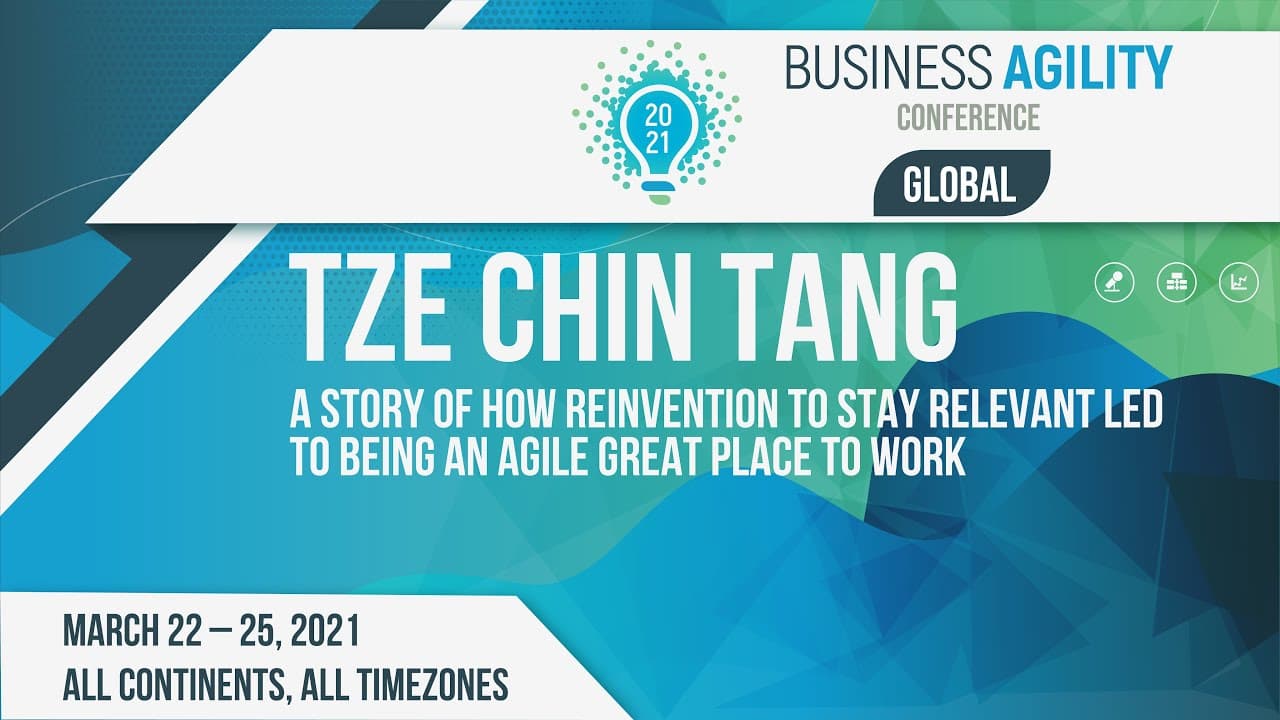Good morning, good day, good evening to everyone joining us from around the world. Today, I am here to share a story—one about taking a lagging organization and, in the process of trying to stay relevant, transforming it into an agile great place to work.
Last year, we were honored to be recognized for this transformation by the World Agility Forum with the "Agile Great Place to Work" award. This talk is about our journey—how we got there and what made us successful.
The Beginning: A Legacy of Two Giants
Our story starts with two companies: JobStreet and JobsDB. These were among the original Asian tech pioneers, born in the late '90s, helping tens of millions of people find employment across Southeast Asia and Hong Kong. These giants dominated the job market in seven countries and were collectively worth over a billion dollars when they were acquired.
In 2015, both companies were acquired by another giant—SEEK. For those of you calling in from Australia or New Zealand, SEEK is a household name when it comes to employment platforms. SEEK merged JobStreet and JobsDB, forming SEEK Asia. However, when the founders exited, the new company was left with a fresh leadership team and a massive challenge: how to stay relevant in an increasingly competitive space.
The Challenges We Faced
With new competitors like LinkedIn, Indeed, Facebook, and Google entering the job space, SEEK Asia had to find a way to differentiate itself. But the organization we inherited in 2016 had major problems:
- Two of Everything: Since this was a merger of two competitors, we had two cultures, two systems, two products—everything was duplicated.
- Slow Deployment: We were lucky if we had more than one production deployment per month, while our competitors were deploying daily.
- Unhappy Customers: 25% of customer issues failed to meet SLAs, eroding trust and satisfaction.
- High Staff Turnover: Many employees took their stock options and left. Others refused to work with former competitors.
- Low Employee Engagement: Our aggregated employee engagement score was less than 20%—abysmally low.
Clearly, a transformation was necessary. But how should we go about it?
Approaching the Transformation
We knew we had to reorganize, but the key question was: how? Traditional project management methods would have given us a structured plan with time, cost, and scope neatly mapped out. But as agilists, we knew that transformations don’t work that way. Research from McKinsey shows that three out of four reorganizations fail. I had been part of many failed transformations myself, so I knew what not to do—but I still had to figure out what to do.
My background was in agile product development, not change management or large-scale transformations. But I decided to approach this as I would a product. If the organization was the product, then my role would be the product owner. And just like in product development, we needed a guiding set of values:
- Customer Over Profits: Happy customers will drive profitability.
- One Cohesive Organization: We could no longer have "two of everything."
- Continuous Adaptation: We couldn’t plan everything upfront; we had to inspect and adapt.
- People First: In a tech company, people are the most valuable asset. If we didn’t take care of them, they would leave.
Reorganizing the Agile Way
We structured our transformation around three key principles:
1. Design the Organization Around the Customer
We started with a blank sheet of paper. If we could design this organization from scratch, how would we do it?
The job space is a two-sided marketplace: candidates looking for jobs and employers looking to hire. Our role was to match these two sides. So, we organized our teams into two major groups—one focused on candidates and the other on employers.
Within each group, we further organized teams to serve specific customer needs. The fundamental unit of the organization became the team, and we designed the environment around them:
- Short lines to the customer—every team member should know and interact with customers.
- Architecture follows business needs (Reverse Conway Maneuver).
- Flat hierarchy—teams, domains, leadership.
- Clear outcomes—each team had a defined customer problem to solve.
- One organization—no more "Brand A" vs. "Brand B."
2. Deliver the Change Iteratively
We treated our transformation like an agile project. Instead of one massive reorganization, we worked iteratively:
- Limited work in progress—leaders had to focus on a small number of changes at a time.
- Quarterly cycles—every three months, we inspected and adapted.
- Feedback loops—gathering data from employees, customers, and business stakeholders.
3. Empower Self-Organization
One of the biggest shifts was allowing teams to choose their own structure. We ran a self-selection process where employees picked their teams, empowering them to shape the culture.
This was a game-changer. It broke old beliefs and accelerated our ability to change. Over time, employees began solving problems on their own rather than escalating everything up the chain. We created a culture of autonomy and ownership.
Overcoming Challenges
Of course, this wasn’t easy. For the first year, I felt like I was in a pit of despair. We faced resistance, legacy issues, and even petty problems (like disputes over who got a MacBook). As leaders, we committed to resolving every issue—no matter how small.
I also learned an important lesson: change doesn’t come alone. I formed a leadership support group, where we met weekly to share challenges and support each other. I also embraced coaching as a leadership skill, helping others solve problems rather than solving them myself.
The Results: 18 Months Later
After 18 months, we reached a tipping point where the transformation became self-sustaining:
- One organization, one system, one culture.
- From one deployment per month to thousands of deployments.
- Employee turnover cut in half.
- Customer issue resolution improved to 95%.
- Employee engagement soared beyond 70%.
This journey earned us recognition from the World Agility Forum as an "Agile Great Place to Work."
Key Learnings
- Treat the organization as a product. Think like a product owner.
- Let agile values guide decisions. When in doubt, go back to the Agile Manifesto.
- Inspect and adapt constantly. Feedback loops drive success.
- Storytelling is powerful. A compelling narrative brings people along the journey.
That concludes my story of how reinventing to stay relevant led us to become an agile great place to work. Thank you for your time and attention!



 Have you ever been looking for actual case studies of how a once successful company reinvents itself through agile, to continue being a relevant, market leading organization that is also a great place to work? If yes, then this talk is for you!
Have you ever been looking for actual case studies of how a once successful company reinvents itself through agile, to continue being a relevant, market leading organization that is also a great place to work? If yes, then this talk is for you!